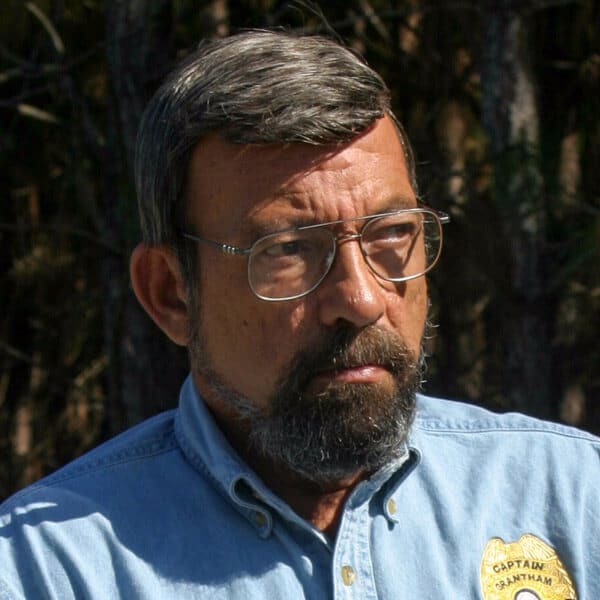Prepping for a Pin Shoot
February 26th, 2023
6 minute read
Shooting bowling pins off a table 25 or so feet away is sort of the grown-up version of plinking tin cans off a fence. When you do it on the Back Forty on the farm, you have fun. When you do it at the de facto national championships of bowling pin shooting — The Pin Shoot in Central Lake, Michigan every year — you win nice guns. Last year, Springfield Armory sponsored the shoot, and dozens of Springfields were given away to shooters who turned in good scores.
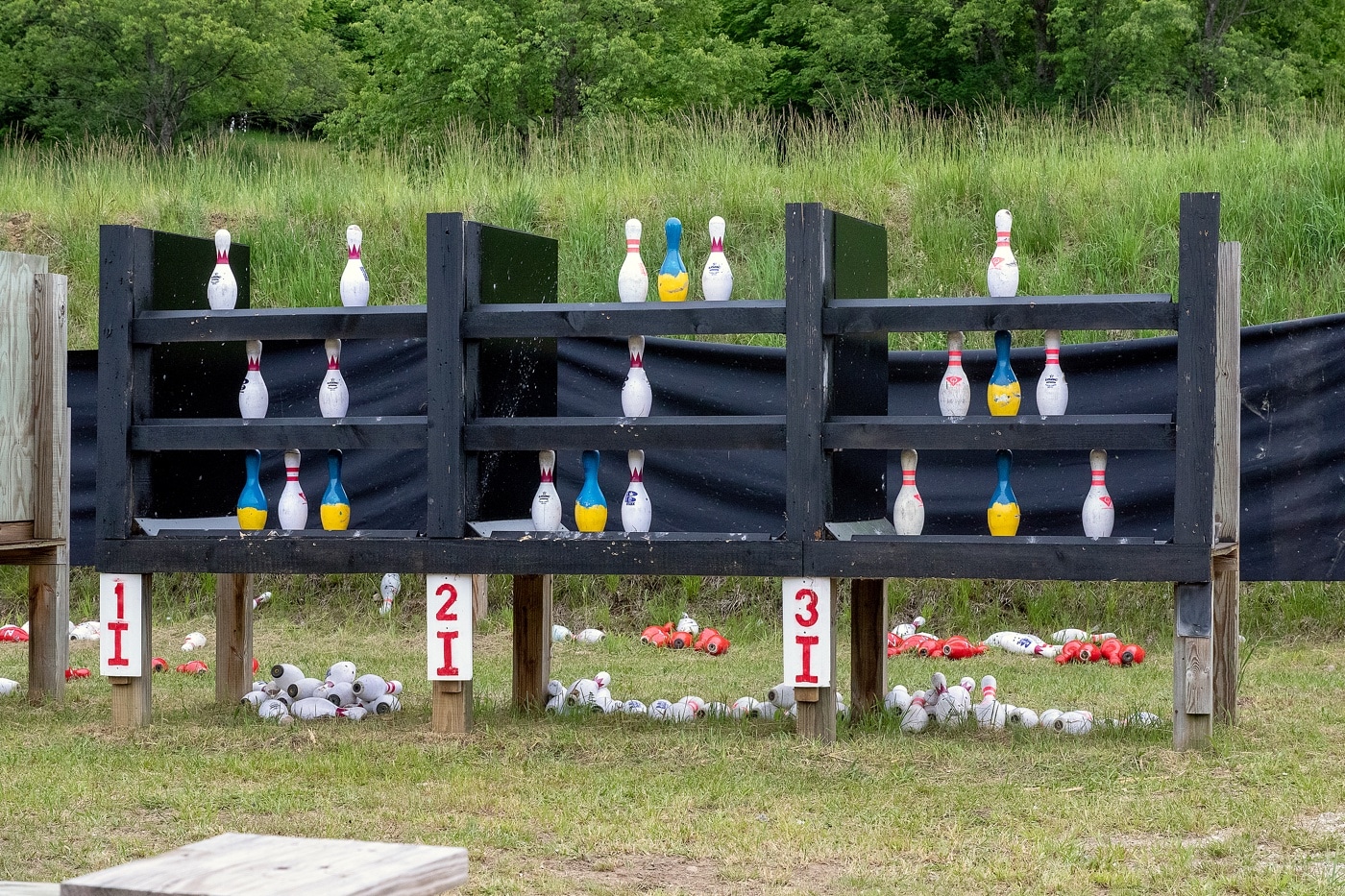
How do you practice for that sort of thing? There are lots of ways, and therein lies the genesis of this article.
What You Have To Do
Richard Davis, the founder of the pin-shooting sport and still the El Supremo of the Pin Shoot, started what was then the Second Chance Shoot in the mid-1970s. Davis was the man who “bullet-proofed America’s police” by inventing the first soft-body armor that could be worn unnoticed under a uniform shirt and stop most handgun bullets and shotgun blasts.
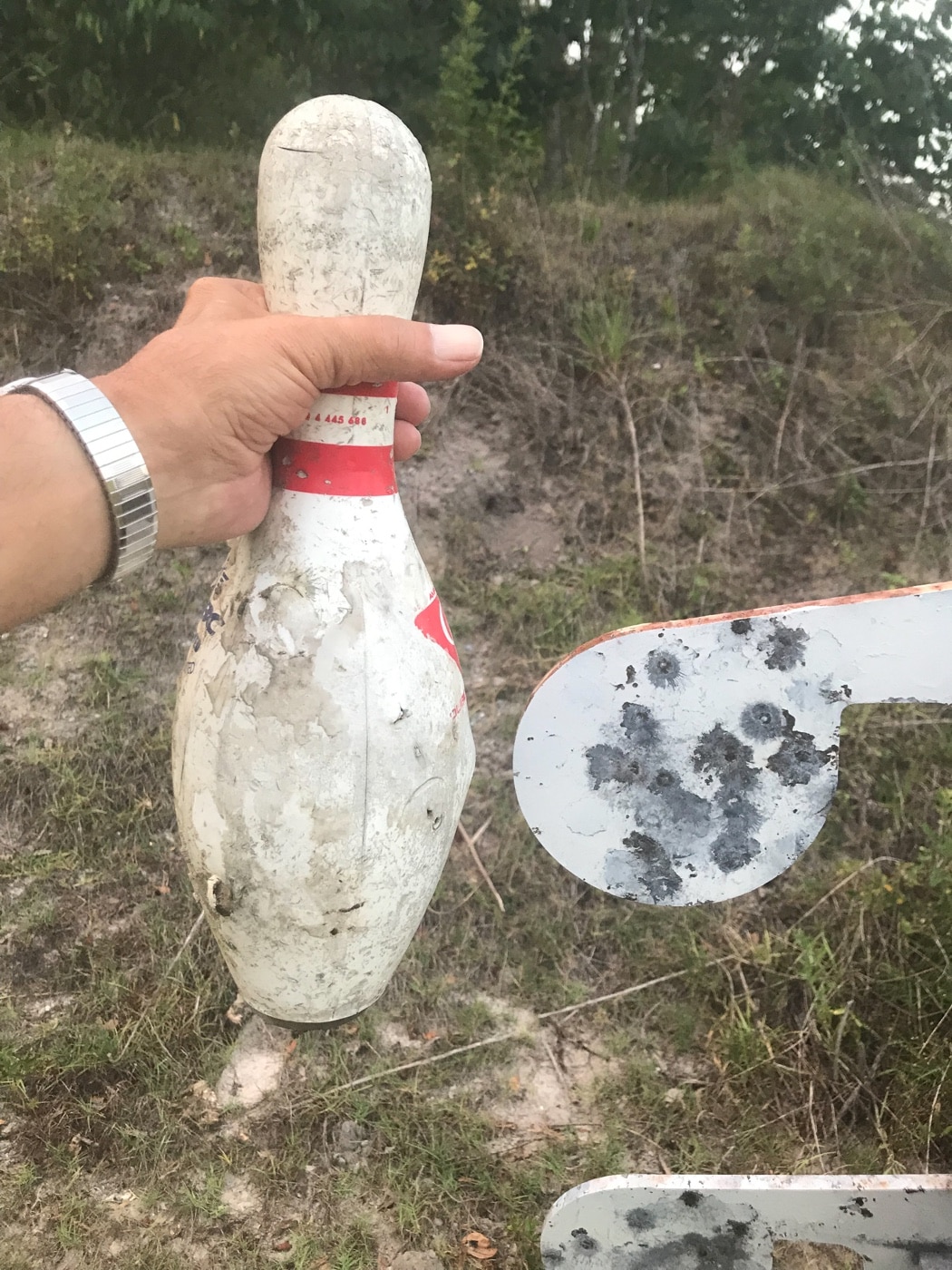
It occurred to him in his early days, the beginning of the 1970s, that he’d have to show cops that after absorbing all that energy on soft armor they could still return effective fire, so he demonstrated by shooting himself on the vest and then turning around and blowing some bowling pins off a table.
Because a bowling pin held against your chest covers the area from cervical spine to solar plexus and encompasses the heart at pretty much the exact same space and size, a bullet that hits the bowling pin is highly likely to solve anti-personnel problems in a defensive shooting.
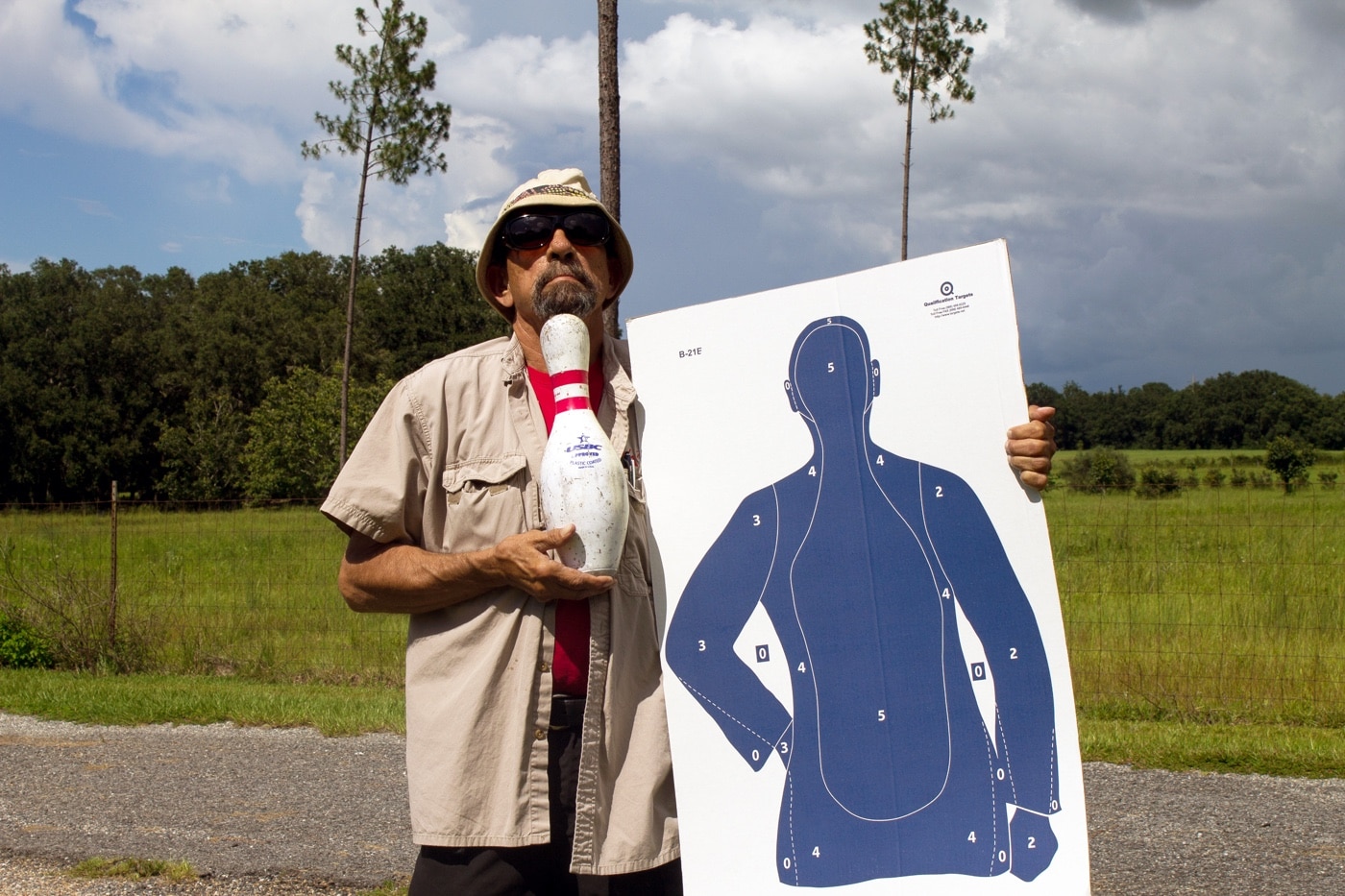
It occurred to Davis, when he decided to host a shooting match for his customers, that the pins would be an excellent format for the event. He turned out to be right.
Bowling pin shooting became a shooting sport then and there, and has continued as such ever since. There are lots of ranges around the country where bowling pin shoots are hosted regularly. One thing Davis discovered immediately was that, unlike bulls-eye shooting or PPC, the instant reaction of the targets made pin-shooting a spectator sport — it is simply exciting to watch; all the more so in man-on-man shoot-offs. He quickly installed bleachers for audiences.
When you are the contestant, what you have to do is shoot the pins off the table faster than anyone else. Now, there are some events — at the Pin Shoot, and locally — where you only have to tip the pins over, or knock them off the back edge of the table. These cater to so-called “minor calibers” such as 9mm or .38 Special.
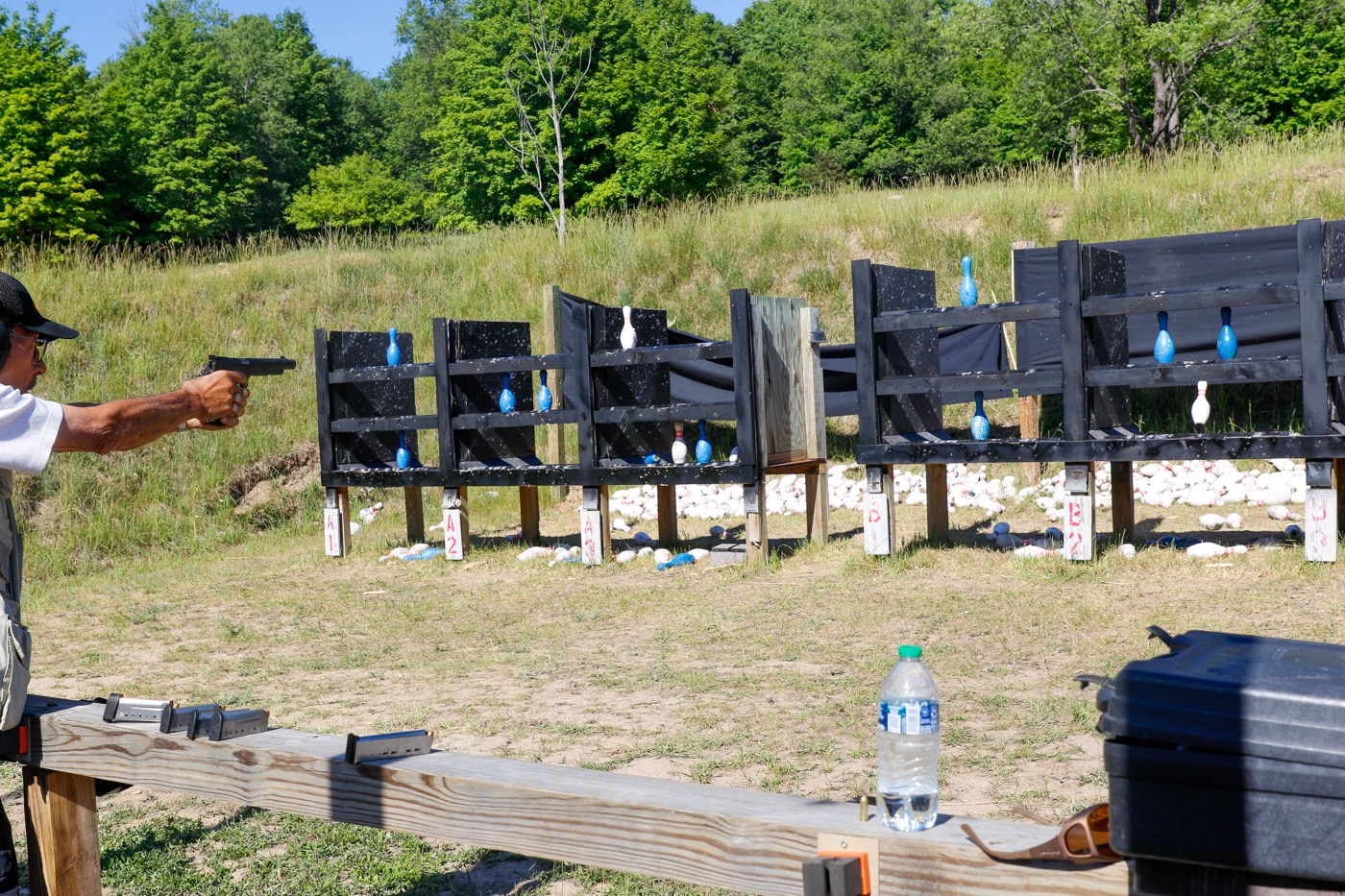
However, in the big matches the heavy wooden tenpins generally need to be blasted three feet back off the table to stop the clock when the last one hits the ground, and that brings you into full-power 10mm or .45 ACP in semi-automatics and big, heavy bullets or “Magnum force” with revolvers.
Let’s look at some practice options.
One Approach
When I got into this stuff in the mid-1970s, I saw it as “plinking for serious grown-ups.” Instead of shooting tin cans off the back fence, you were shooting bowling pins off a table. I was into the 10-gauge Magnum Roadblocker shotgun at the time and had a bunch of spent hulls that I practiced on at the match distance of 25 feet. By the time I got to the match itself, the bowling pins looked like grain silos to me. I shot well enough to win an ounce of gold.
But, heck, the best I ever did at this match was second place overall in Stock Gun. It seemed logical to ask the champions of the sport how they practiced for it.
Practice Like a Champion
I asked some of the all-time great champions of the pin-shooting sport what their advice would be for someone coming to The Pin Shoot for the first time. In alphabetical order:
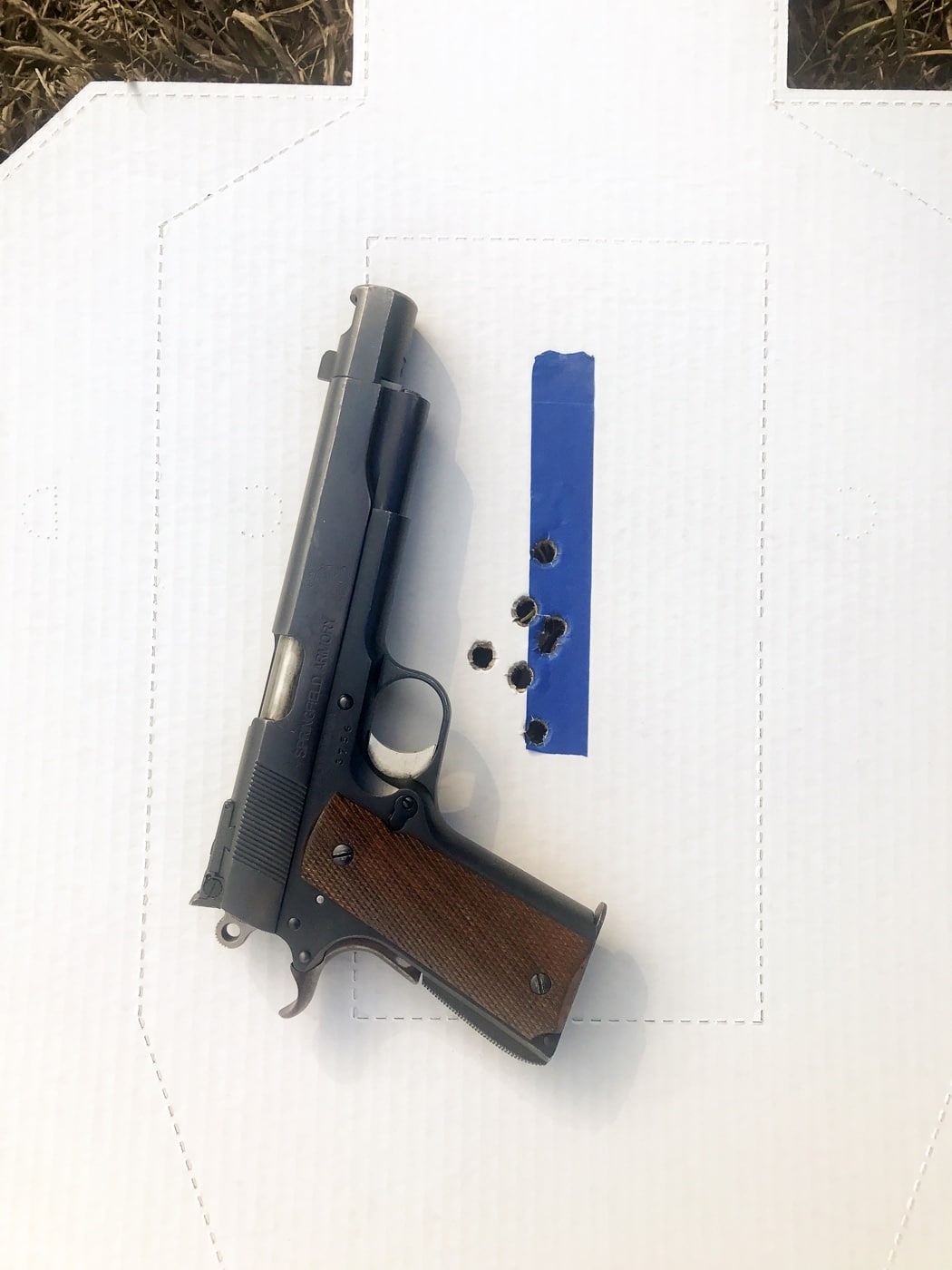
Jerry Barnhart has won so many national and world championships that he has to stop and think to come up with the exact number. Entering every event at the shoot from 1984 to 1998, he always came away from the prize table with at least nine guns, and often his prize gun count was in the teens.
In the main events, Jerry shot a 1911 .45 ACP, often a Springfield Armory. He says, “My favorite load was Speer “flying ashtray” 200-gr. JHP that took a deep bite. Hornady sponsored me with XTP 200-gr. bullets at almost 1,100 feet per second out of my .45, and 230-gr. XTPs at 1,000. Those loads took the pins right off the table.”
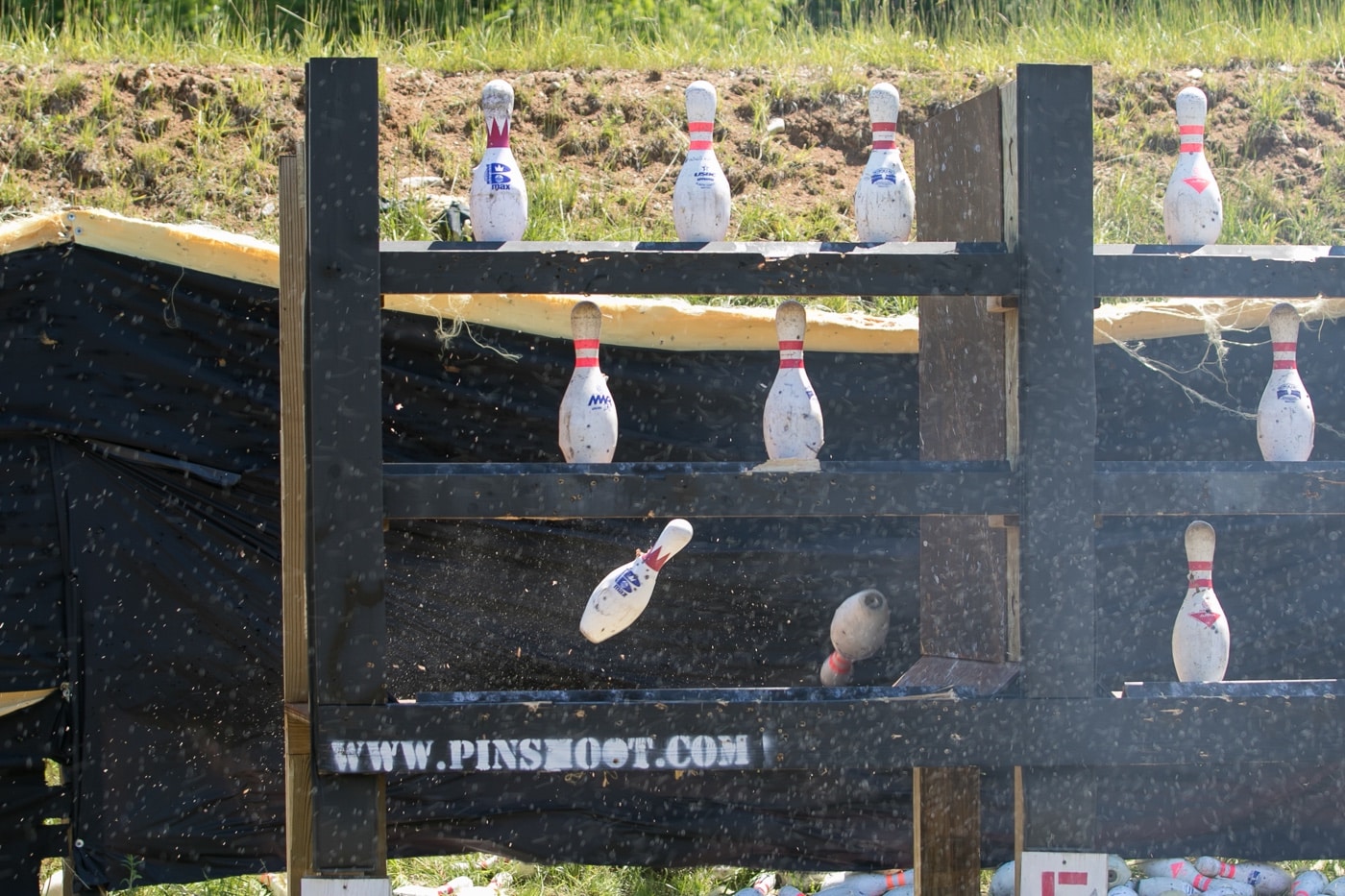
For preparation, Barnhart advised, “Bringing the Pin Shoot back is good. I would recommend this match. When I shot it the first time I thought ‘you’re only shooting at really close ranges’ but it turned out to be way harder than it looks. I have great respect for what Richard Davis was trying to promote. You only have a 1” strip top to bottom to get that pin straight back off the table. To shoot them at the speed required to get to the winners’ table is tough. I shot at a 1” strip of tape on cardboard for practice, more than I practiced on pins. It takes marksmanship to hit that, going fast.”
Bill Wilson shot his way to fame at the Second Chance predecessor of today’s Pin Shoot many years ago before he no longer had time to compete. He’s still a great shooter, though. He was the overall winner there multiple times, always finished high up at the prize table, and for a long time co-held the national bowling pin speed record with Johnny Robbins.
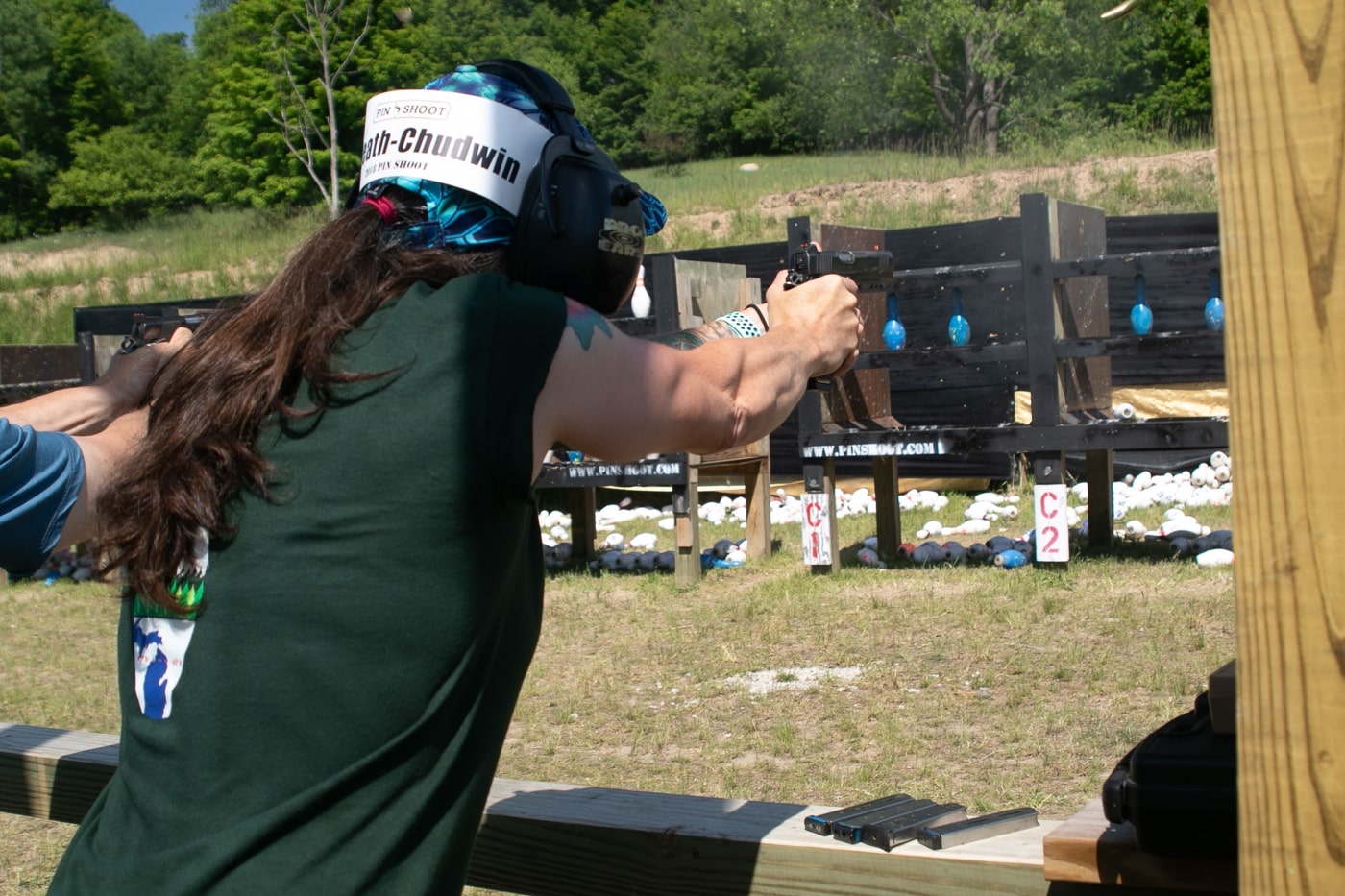
Bill told me recently, “I primarily shot paper pins working on center hits, but close to the match I’d round up some actual pins and shoot them. Hitting the pins in the center half is key to clearing the table, edge hits will only cost you time trying to get downed pins off the table.”
He added, “It’s all about where you hit the pins. I aimed halfway between the center and neck. Below that there’s a hollow spot in the pin and the bullets just go through and don’t get a real bite on the wood. My advice for new shooter shooting pins? I think the key is precision shot placement. Focus on precise hits. A bunch of wood rolling around the table gives major problems. Shoot a load you can control and hit exactly the sweet spot.”
Finally…
When great champions say that of all the matches they’d shot, this one was the highest on Fun Factor, I listen. I’ve found the same true, and I hope to see you there in June of 2023. All the info you need can be found at www.pinshoot.com. My thanks again to Springfield Armory for sponsoring this iconic American sport shooting event.
Editor’s Note: Please be sure to check out The Armory Life Forum, where you can comment about our daily articles, as well as just talk guns and gear. Click the “Go To Forum Thread” link below to jump in and discuss this article and much more!
Join the Discussion
Continue Reading
Did you enjoy this article?

 108
108





